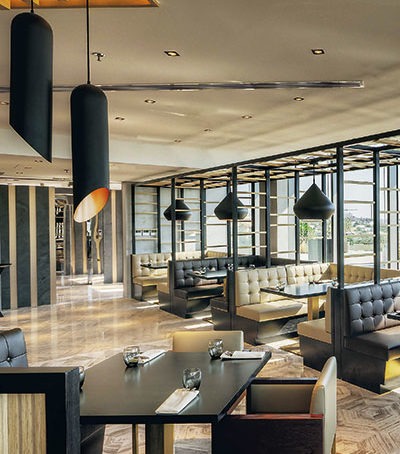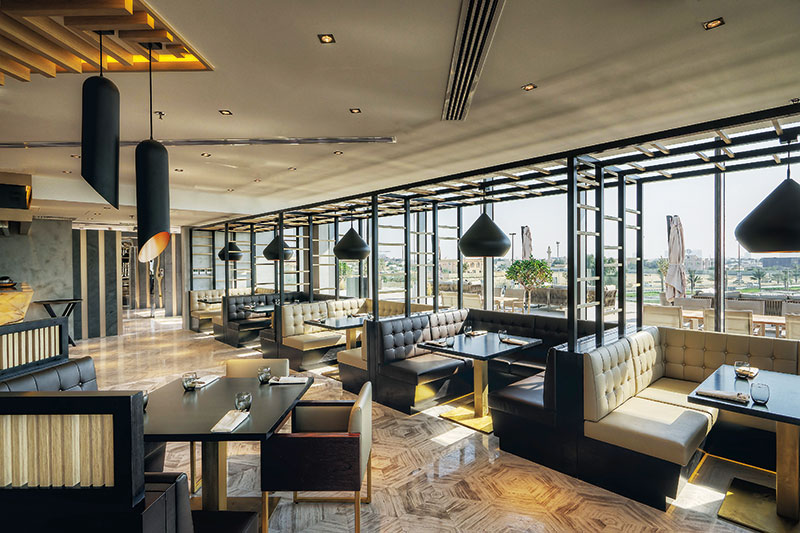Gebran N. Bekhazi, managing partner of The Food Studio, offers practical solutions on how to radically reverse the downward trend of hotel F&B
All day diner (ADD) concepts have always been the center of attention and the main element that hotel operators rely on to create that ‘wow’ factor in terms of offering overwhelming food offerings. However, in recent years, they have been under scrutiny. Hotel operators are more concerned about filling up their restaurants through the three main meals of the day without having to worry about huge wastage and low turnover resulting from the lunch and dinner buffets. Property owners and operators have been struggling to mitigate all the risks related to developing successful breakfast, lunch and dinner concepts.
We have put most 5-star hotels and resorts in the MENA/GCC regions under the microscope in order to benchmark against global players and analyzed what they have come up with in terms of innovative offerings to replace the all-day diner genre, but failed to identify even one successful transformation.
Six instead of three
At Food Studio, we believe that it goes beyond the three main meals of the day and have identified six meals per day: breakfast; lunch; dinner; tea time; happy hour; and snacks.
To tackle these challenges, we have noted the implementation of different hybrid strategies and approaches:
• Many operators are implementing grab-and-go concepts to complement their traditional room service and to cater for the quick service demand of the clients looking for a speedy, casual and inexpensive meal solution.
• F&B experts have also highlighted in 2017/18 industry reports the major trend of marrying artisan craftsmanship to a restaurant. We have seen it in a couple of steakhouses that have gone global. Hotels are therefore becoming a destination.
• Moreover, recent studies have shown that hotel clients expect a local experience rather than a ‘deja-vu’ look and feel when visiting a property. Operators are incorporating local products, such as farm-to-table dining. Guest can now enjoy locally hand-harvested, fresh produce in addition to adopting sustainable and environmentally friendly practices, which, significantly, is proving to be appealing to Millennials. Over-and-above operators are now deeply involved in organizing local activities to differentiate their property from others.
• Breakfast is the next big thing and should be the new brunch. Forbes Magazine calls it ‘brunchfast’. Breakfast buffet items should be ramped up to include non-traditional morning items, like chicken, chorizo and other crunchy stuff, rather than the old-style soft items. This trend will also make space to have all day breakfast items.
Health-food aficionados; fitness and environment-conscious diners need to be catered for
• The role of vegetables in food and drinks is expanding at a rapid pace. As per Mintel’s 2017 Global Food and Drink Report, plant-based food is expected to explode into the mainstream this year. According to new figures from the Vegan Society, the number of vegans in the UK has risen 350 percent over the past 10 years, with 42 percent aged between 15 and 34 (the generation of Millennials). In the US alone, the annual meat consumption per person has fallen 15 percent from 2014 to 2015. With that in mind, most hotels are trying their best to have an exhaustive vegan offering available.
• Everyone wants a better deal: that was the motto of 2017 and it seems to be spilling over into 2018. People are going out of their way to find vouchers, coupons and customer loyalty programs that can help them redeem an immediate reward. Hotel programs have been offering major instant discounts for cardholders at their restaurants.
• Social multipurpose space is starting to take much of the importance from the traditional restaurant confinements and an open-seating concept can be expanded to other, larger areas of a hotel.
• Entertaining the guest: this trend is in growing demand as most clients enjoy some inter-activity and live stations, along with the resulting creations. We are seeing more and more chefs come out of the comfort of their kitchen to mingle with clients.
A new ‘modus operandi’ needs to be implemented, taking into consideration the afore-mentioned trends, which would allow clients to engage in a large display of food and cooking-station activity, while minimizing wastage and optimizing occupancy, with enough attractions to win market share. Making this shift has also proved to be challenging for interior designers, with whom we are working closely to morph the traditional ADD into interesting and unique concepts.





















